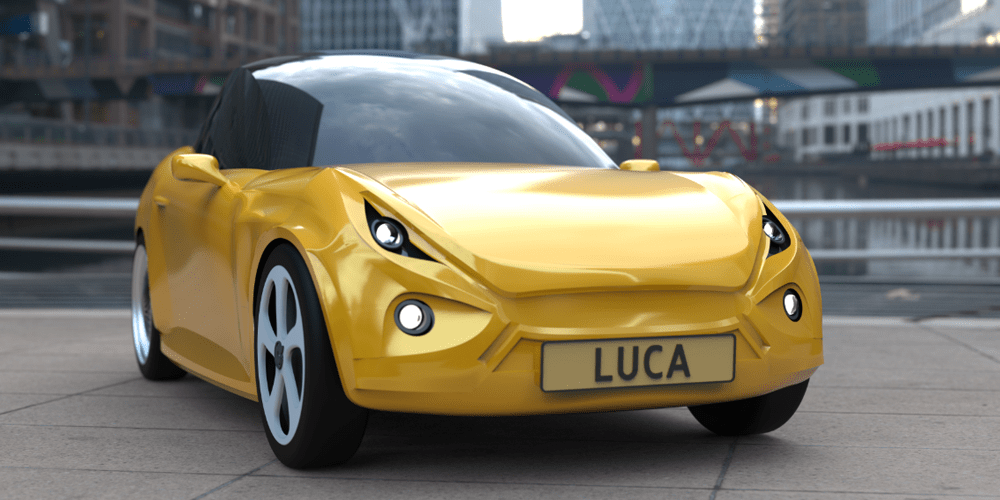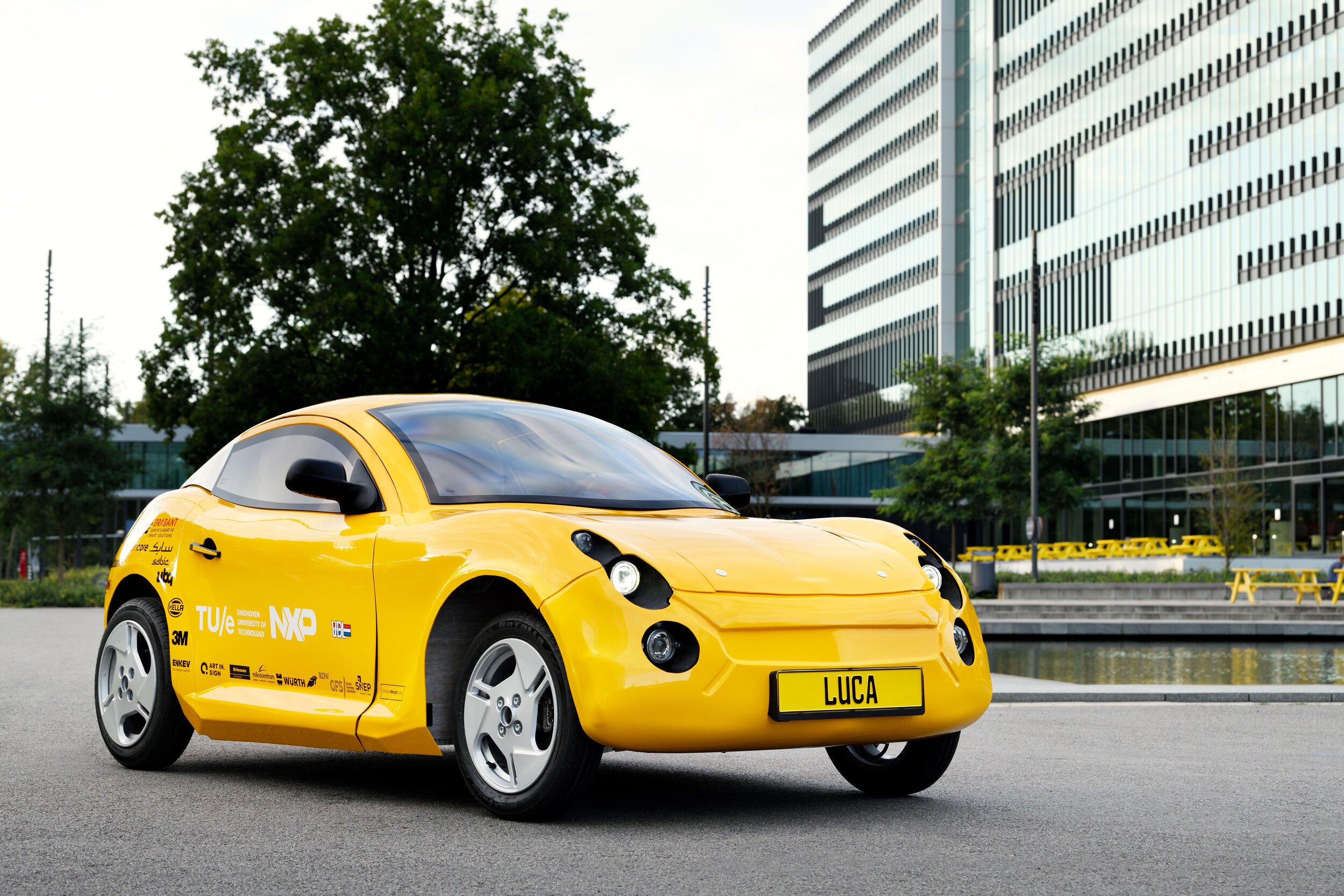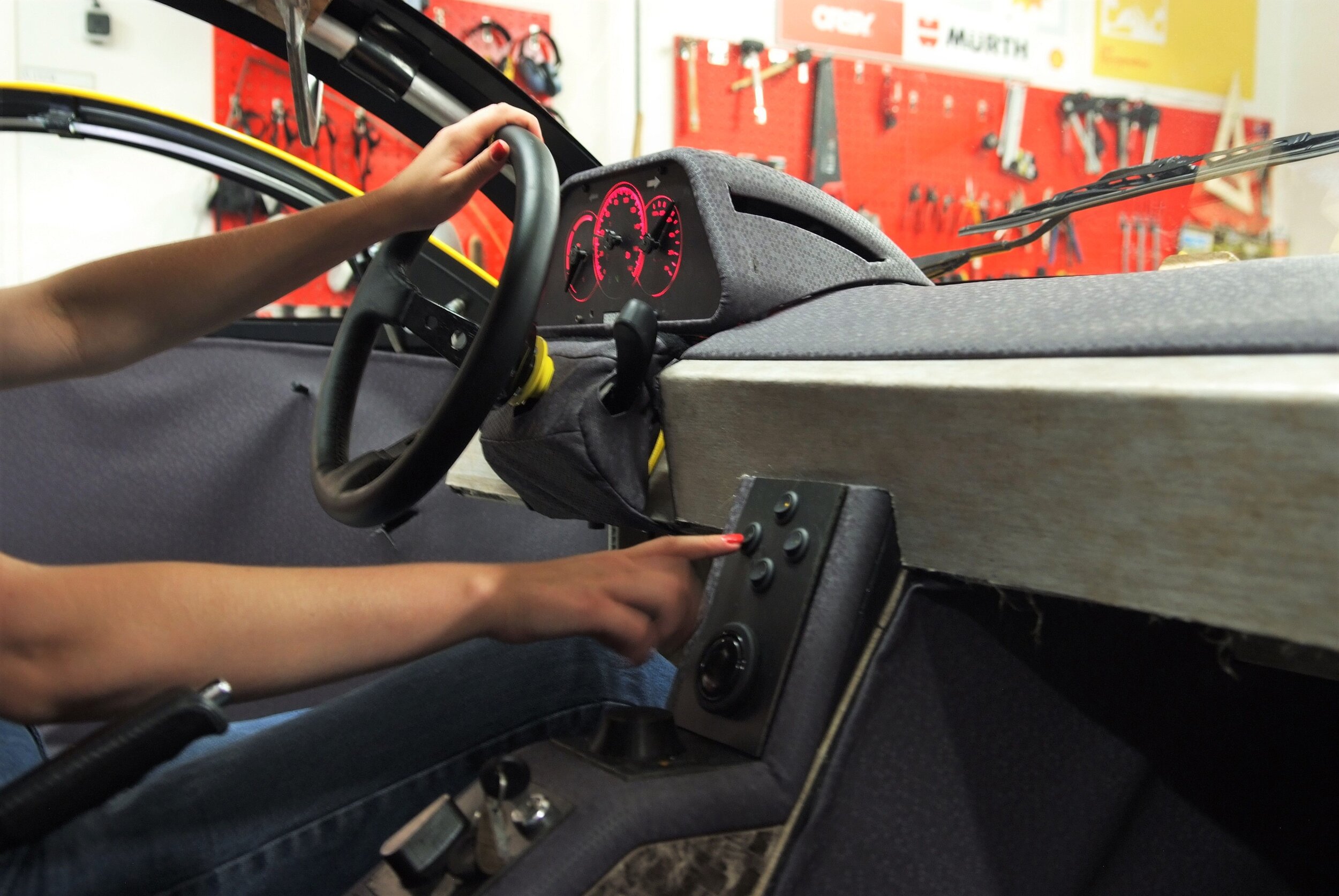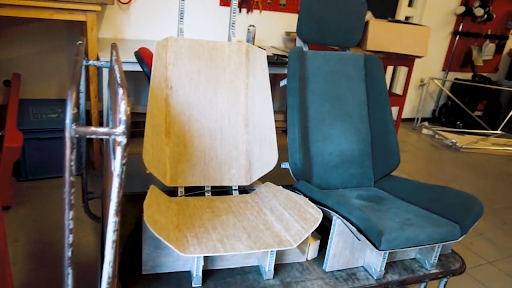On October 8, engineering students at the Eindhoven University of Technology in the Netherlands unveiled their latest “Ecomotive” project, Luca. This tiny EV represents the latest and greatest in sustainable mobility, or sustaimobility, as it really ought to be called. The car’s body, windows, interior, and even chassis, are made from recycled plastic that the team just found lying around. Some of it was pulled directly from the ocean, where plastic waste is a serious pollutant and health hazard to local wildlife.
The idea for a recycled car first came about in February of 2019, with the students producing a digitally-rendered concept of the vehicle the following December. During this design process, the team partnered with manufacturers like Van Wees and Econcore to figure out how old toothbrushes and water bottles can be turned into a fully-functioning Luca. Then Eindhoven spent 2020 collecting hundreds of pounds of plastic litter, re-manufacturing it into useful components, and finally showing off the finished car this month.
Luca digital concept vs. finished product Credit: TU/e
Luca’s bright yellow body panels were moulded from reclaimed ABS plastic, a very common opaque and rigid material. The color on the panels come not from paint, but a lightweight cellophane-esque wrap that can easily be removed and recycled at the end of the vehicle’s life. Plastic body panels have been commonplace in auto engineering for decades now, but things get more interesting when you look at Luca’s frame, made from what were originally flimsy and disposable PET water bottles.
The students at Eindhoven worked with the partner companies to develop a brand new lightweight composite, made by combining this PET plastic with natural fiber derived from flax plants into sheets that they call “prepreg tape.” Eindhoven University P.R. head Matthijs van Wijk tells us, “The tapes are then stacked in the right orientation and subsequently consolidated using a press system and the help of our partner SABIC. When the stack enters the machine, the material is heated until the melt of the polymer. Due to application of pressure, flax composite plates are produced. Two of these plates are combined with a honeycomb core out of recycled PET bottles. These cores are supplied by our partner Econcore. Again by applying heat, the film layer melts and forms a sound bond between the core and the skins. The use of a thin adhesive film instead of a glue saves weight and makes recycling easier.”
This sandwich of two flax plates and a PET honeycomb makes up most of Luca’s structure. Credit: TU/e
These flax-plastic plates are combined with recycled aluminum tubing, which makes up certain structural areas like the roof pillars and suspension mounting points. This manufacturing process is somewhat similar to how today’s advanced carbon fiber chassis are created, only the Luca’s is made with much more readily available materials. It also calls to mind the East German Trabant, which featured a body made from a bonded composite of waste resin and cotton fibers.
Luca’s aluminum and plastic skeleton under construction. Credit: TU/e
Moving inside the Luca, we see more moulded panels, as well as “fabric” upholstery that is woven from that ubiquitous PET plastic. The car’s two seats are stuffed with a natural combination of horse hair and coconut fiber. Its center console is composed of several different types of plastic, creating a psychedelic swirl effect in its appearance.
The vehicle is powered by two electric motors at the rear wheels which have an output of six kiloWatts apiece. That’s around 16 combined horsepower. Not a ton, but it should be enough, considering that the car only weighs about 925 pounds without occupants. The university claims that Luca can also reach a top speed of 55 miles per hour and travel 136 miles before draining the battery. That’s about as much speed and range as you could ever need out of an urban microcar.
A big goal of the Luca concept is to create what’s called a “circular economy” of manufacturing, in which the vehicles can easily be broken down to raw materials, and recycled into new products at the end of their life. PET plastic can be recycled up to ten times while still maintaining its properties, so the materials used to make one car could potentially last decades in this production model.
Credit: TU/e
Plastic waste presents a massive environmental problem across the globe. According to World Bank, over 240 million tons of plastic waste are currently being generated per year, with about 35 million of that coming from the U.S. Only 10-20% of the stuff gets recycled. That leaves a vast majority to get dumped into landfills, where the heat of the sun breaks it down into toxic microplastics that degrade air and water quality all around the area. In years and decades to come, it will be crucial to create programs which can reclaim this plastic waste and convert it into much longer-life products, such as the Luca.
The Ecomotive team is currently petitioning their government to get a one-off vehicle registration for the Luca, making it legal to drive on Dutch streets. That will require a basic safety checkup on the car, but won’t take any crash testing. Unfortunately, that means we really don’t know how well the recycled composite would hold up in an accident. According to Mr. van Wijk, “When a car with similar materials gets put in production, it is definitely possible to create adequate crumple zones, but it is not implemented into this car.”
Credit: TU/e
There aren’t any plans at this point to turn the prototype into a production vehicle, as it was built mostly as a proof of concept. However, van Wijk tells us there is some OEM interest in using the flax plates for vehicle interior structure, replacing things like heavy steel seat frames. If adopted, these new materials could hopefully give manufacturers an affordable method of weight-saving, which is paramount to fuel efficiency. All while saving a few water bottles from a landfill in the process.









